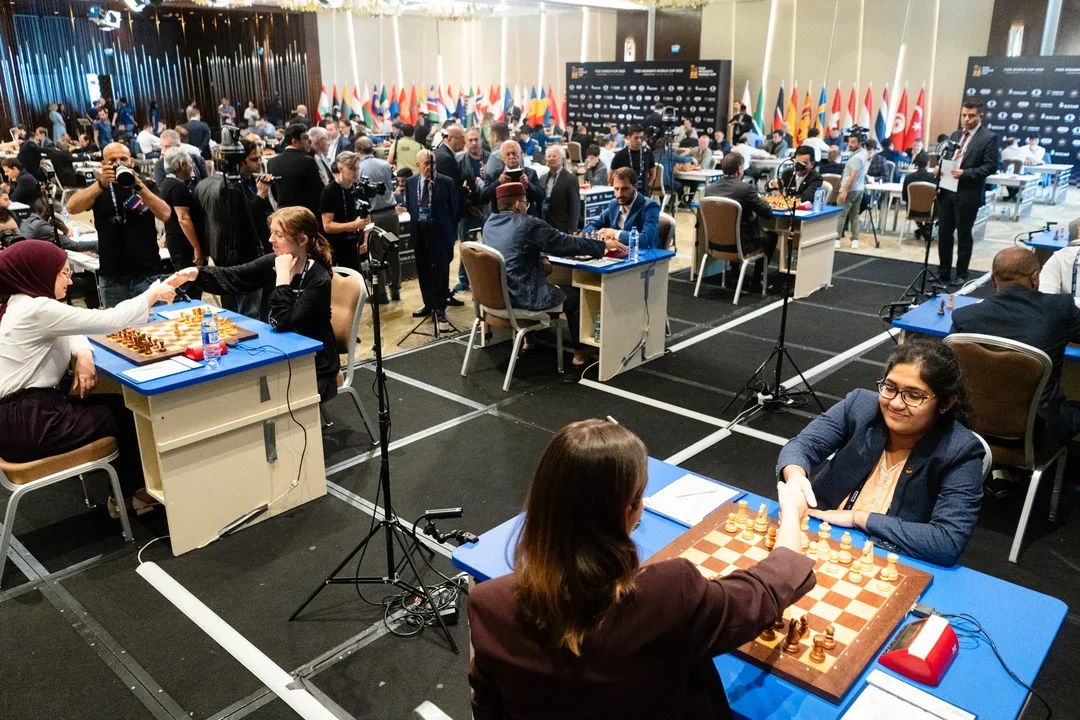Imagine a room the size of the movie theater, but bigger. From the front of the room rolls down a giant projector, where real-time chess action of the top boards is broadcast live to both the players and spectators miles away. On stage, the top three boards of each section are showcased, their tables standing firmly on the shining podium. In the two corners of the hall, myriad national flags wave proudly, displaying their vibrant colors in all their glamor. Situated like tiny islands, pairs of chessboards populate the playing area, full of the strongest chess players from all over the world. Although the players come from thousands of miles away, the World Cup brings together everyone in a lovely biannual tournament.
This year’s World Cup was held in Baku, the capital of Azerbaijan, and boasts over 200 players in the Open section and over 100 players in the Women section from dozens of countries. The World Cup consists of seven rounds and a final match, with each round lasting two games and a tiebreaker if needed. The Women’s World Cup is one round shorter. The format is explained in more detail here.
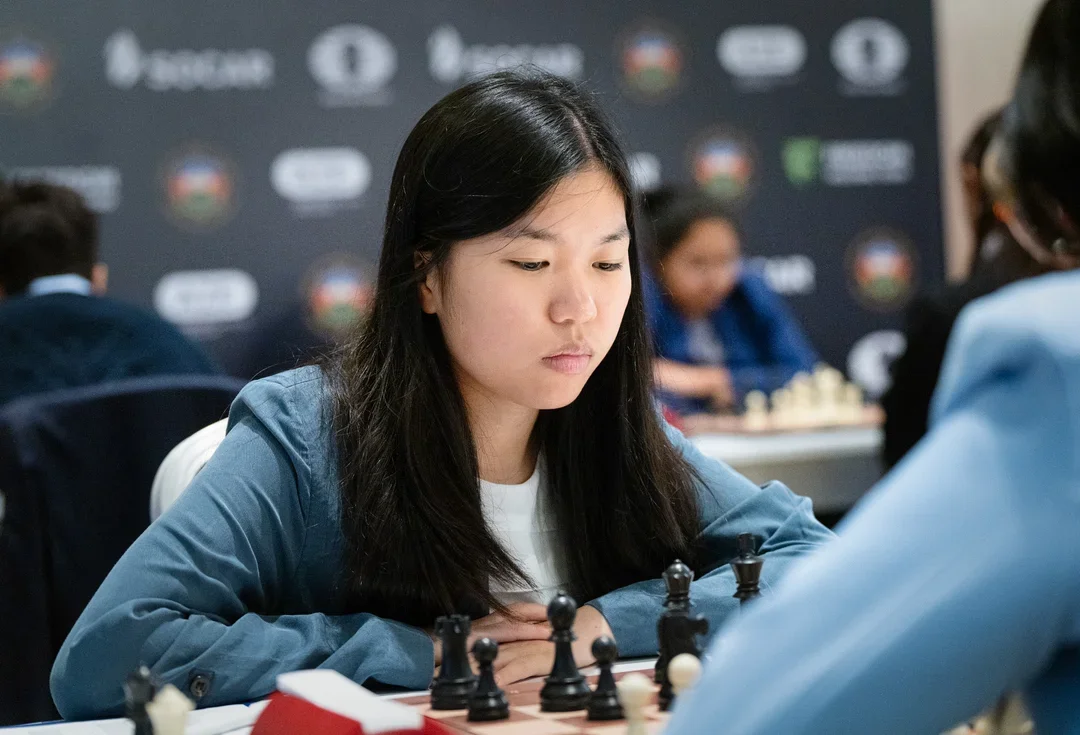
Despite its single-elimination format knocking out almost half of its participants in just a few days and taking the players onto a roller coaster of emotions during the tiebreaker rounds, IM Carissa Yip, one of three American players in the women’s section and the 2021 U.S. Women’s Champion, described the tournament as having a “relaxed atmosphere.” Contrary to the tense do-or-die preparation that one would expect for an elimination event, Yip’s schedule consists of sessions of preparation accompanied with casual mealtime hangouts with friends and getting to the playing hall early to explore and chat with other players pre-round.
Yip even recalls a story from her previous 2021 World Cup experience where, despite accidentally preparing for the wrong color, she still managed to defeat a higher-rated player in the first game of a round. Yip’s strategy of easing the mind seems to be working quite well, as she started off the event with two strong wins against WIM Campos Maria Jose of Argentina, securing her spot in the second round. In her first-round game, Yip used her signature King’s Indian set-up and whipped up a ferocious “knightmare” attack against the white king to decide the game.
It is unclear whether several of the players’ 6:00 am wake-up time is due to the jet lag or the adrenaline due to the World Cup, but one thing is for sure: they are definitely full of energy and excitement going into their rounds.
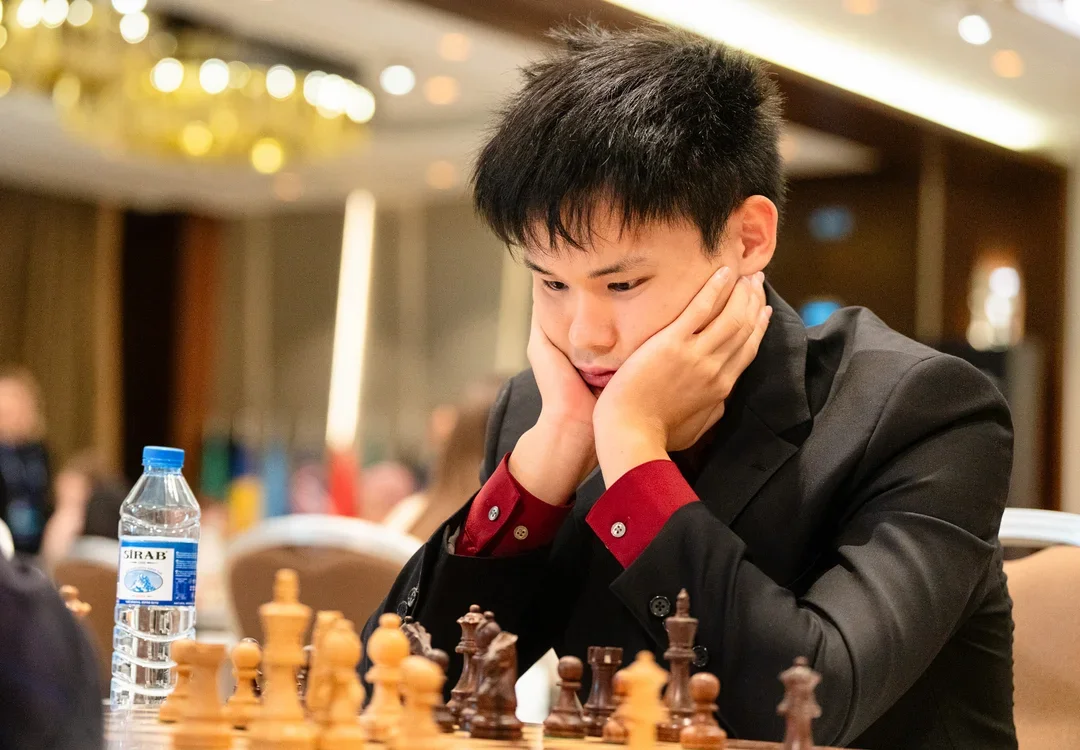
GM Awonder Liang, who is now a permanent resident of the overall top 100 player lists, seized the momentum in his first game against Alisher Karimov of Tajikistan when a thematic central pawn push against the Catalan led to a solid extra pawn and a smooth conversion with the Black pieces.
With a draw in game two, Liang won the match and claimed his spot in the second round.
At world events like these, it is always great to see many members of the U.S. team, many of whom have been regulars at national invitationals. The American representatives at the World Cup are some of the strongest chess players in the nation and are full of talent from young to veteran. Even in a foreign place, team USA shows strong team spirit, and their mealtime moments are always full of smiles.

Of the other Americans, WGM Jennifer Yu, IM Josiah Stearman, GM Gregory Kaidanov all lost their matches 1½–½. GM Timur Gareyev lost 2–0 to GM Emillio Cordova, and GM Christopher Yoo was unable to make it in time for his first-round match, forfeiting both games.
The unique pairing system of the World Cup can make for some very intriguing matchups. Instead of splitting the field into two halves and pairing the corresponding people on each half, the World Cup’s top-bottom pairing system causes the top boards to have huge rating differences and the bottom boards to be nearly identical in rating.
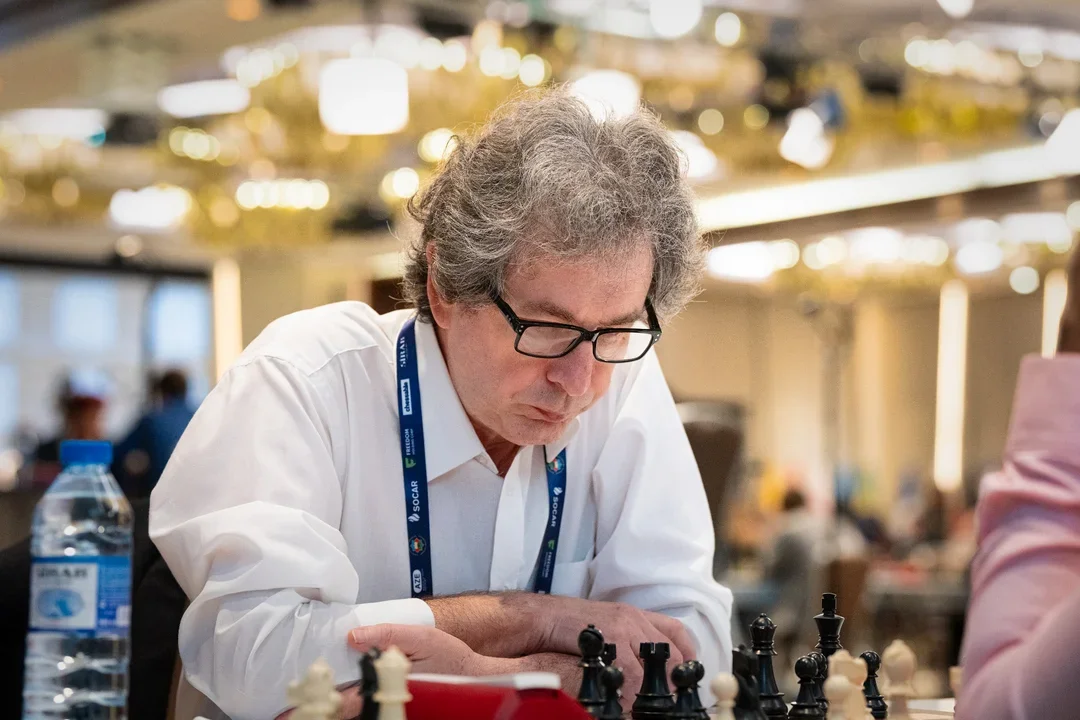
GM Gregory Kaidanov, who is fresh off of the U.S. Senior Championships last month, faced Karthik Venkataraman of India, who differs in rating by only two points! The two played a nearly perfect first round draw, where Kaidanov’s strong play in the triangle Slav allowed him to achieve comfortable equality as Black.
In a sharp second-round encounter with the white pieces, Kaidanov opted for a sharp line in the Italian game, and took a daring risk with mutual king hunts. Building up a strong attack, it seemed like “Alekhine's gun” was about to crash through with checkmate, but unfortunately in a one-tempo detail, the second player was able to hit first, gaining a decisive initiative that ended the game and Kaidanov’s tournament.
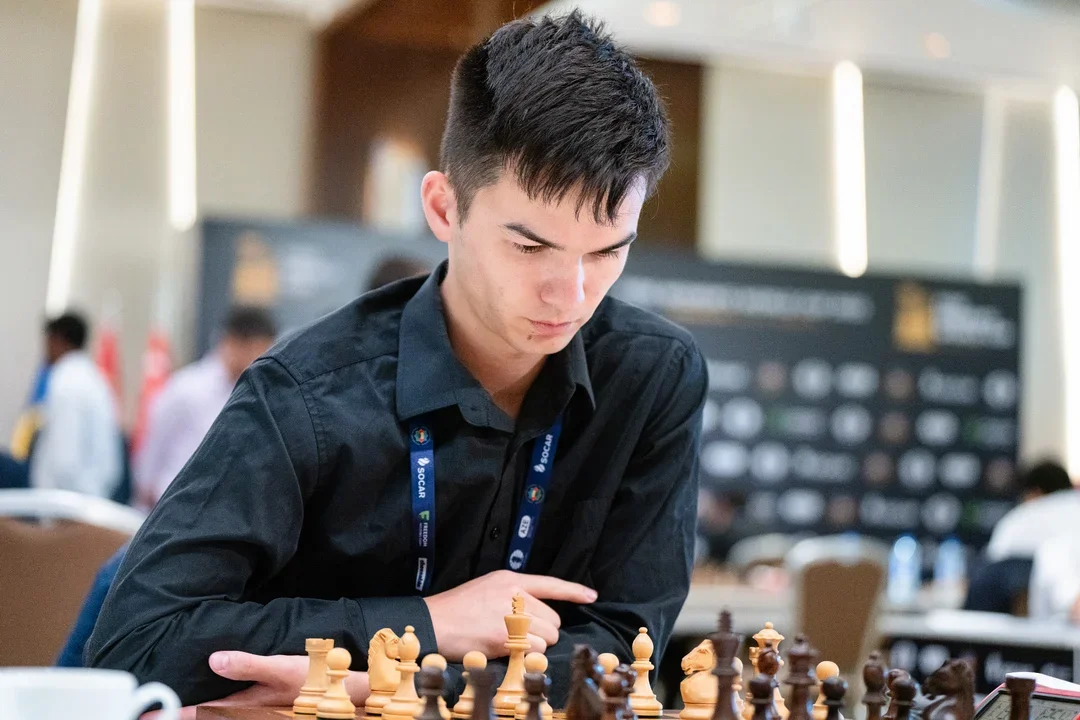
Another fellow American, IM Josiah Stearman, who had just played in the U.S. Junior Championships, faced a huge challenge in the first round of the World Cup, taking on the strong Grandmaster Mikhail Antipov. After a scramble in the English opening, Stearman found himself up an Exchange for a pawn, but the closed position rendered the second player’s knight very powerful. Stearman defended stubbornly, but the knight and passed pawns eventually overwhelmed the rook.
Also facing a tough round one match was the defending U.S. Women’s Champion WGM Jennifer Yu, who faced off against a nearly identically rated WGM Ordaz Teresa from Cuba.
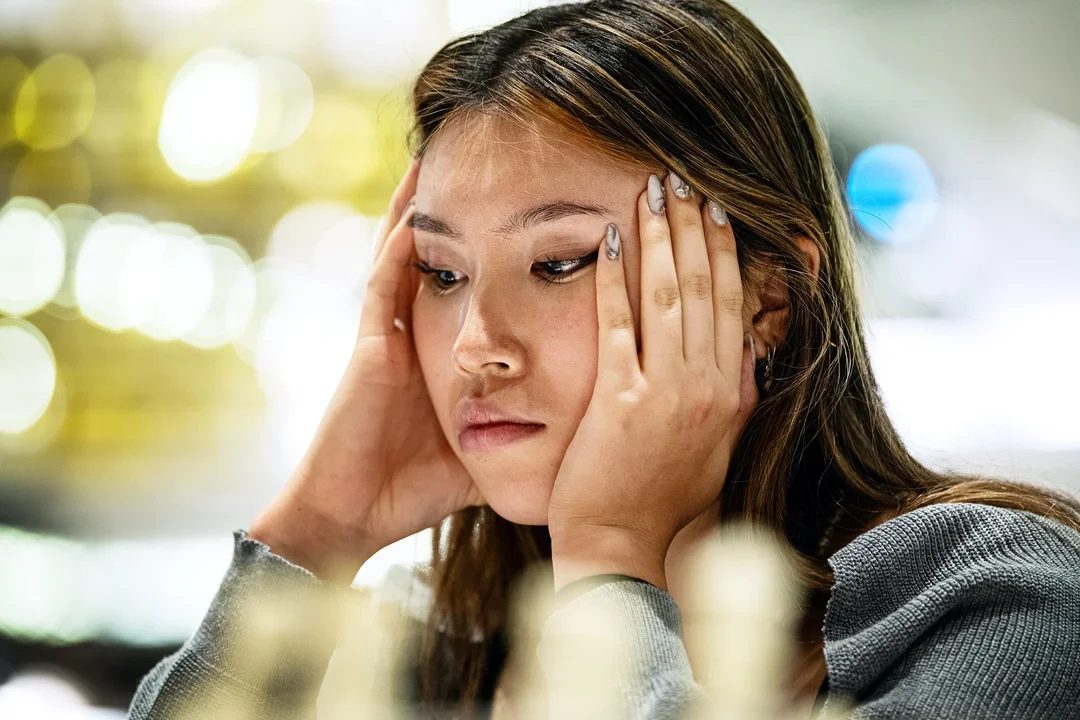
Despite a tough round one loss after her opponent demonstrated precise accuracy in an endgame, Yu created good counterplay as Black the following game, opting for the sharp Modern defense, a rare guest at the top level, but good for must-win games. She remained up a pawn in the rook endgame, but sadly, it was not enough for the win.
Also advancing to round two is GM Emilio Cordova, a Peruvian Grandmaster who lives in St. Louis. Although the Queen’s Indian can often be a quiet opening with risk-free play, Cordova’s first round game was far from quiet.
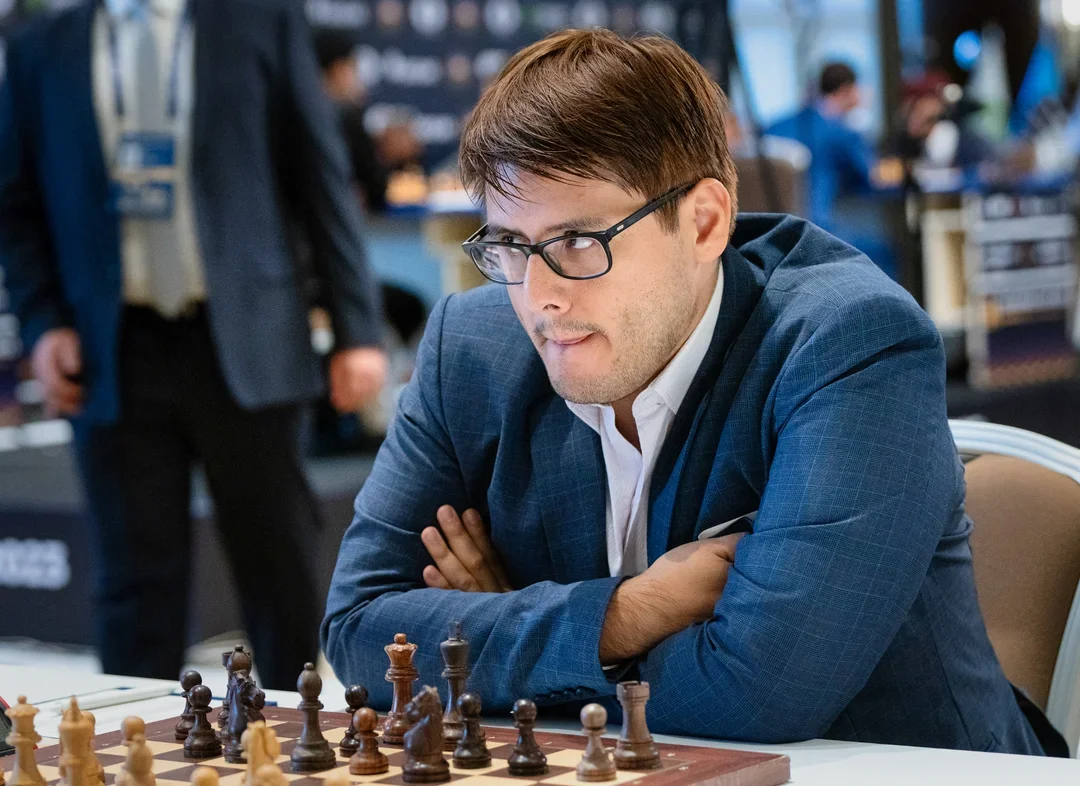
Facing an early piece sac as Black from a familiar name to American chess fans, Cordova neutralized a passed pawn and brought his king to safety, after which the extra knight showed its power.
Speaking of Cordova (who plays under the Peruvian flag), a number of foreign competitors in this event will be familiar to American chess fans because of their frequent participation in American events, such as Austrian GM Felix Blohberger, who played one of the tensest matches of the first round, eventually losing 4–2 in blitz tiebreaks.
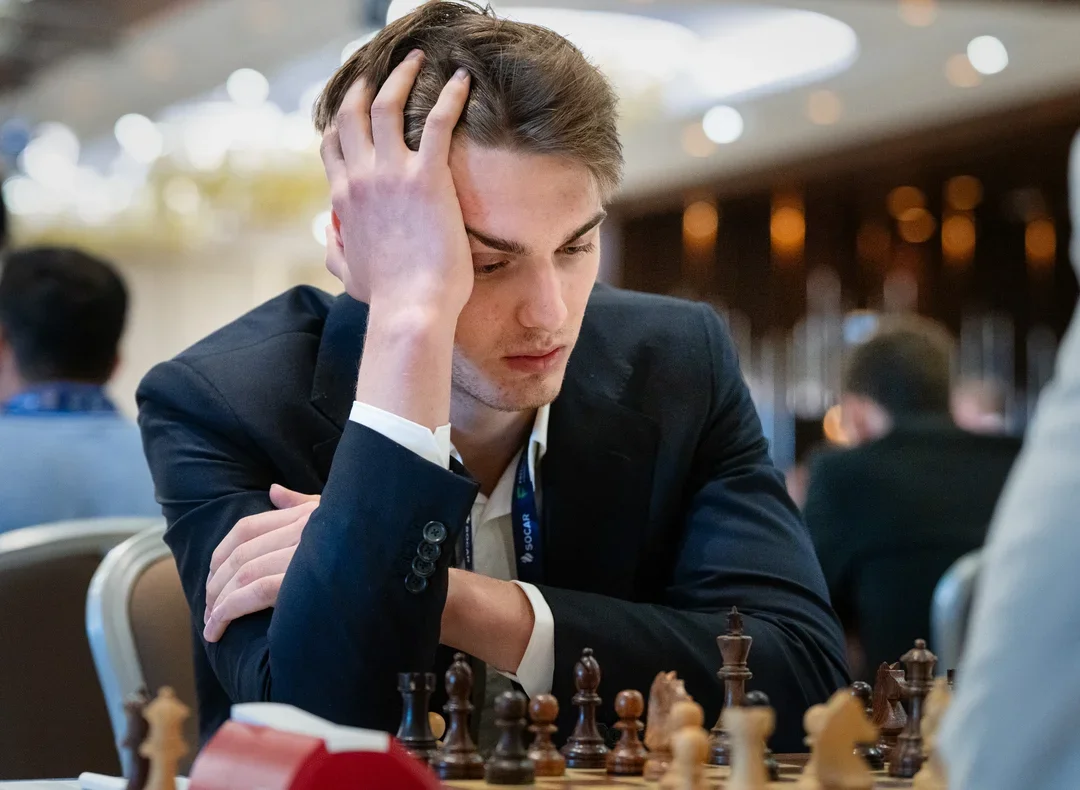
Tense for both players and spectators, the ever-faster controls of the tiebreaker rounds keep us on the edge of our seats! Felix Blohberger, an Austrian Grandmaster who lives in the U.S., had a nail-biting match with Dimitrios Mastrovasilis of Greece after the two standard and rapid (G/25) games failed to determine a winner. Mastrovasilis ultimately prevailed after the rooks on the seventh rank proved decisive in the G/10 tiebreaker game, but with every game before that ending in a victory for one side, the path to the G/10 tiebreaker was anything but dull. Here is the second G/25 game, where Blohberger got the better of a sharp minor piece endgame with mutual time pressure:
Another familiar name is Webster University’s GM Benjamin Gledura (playing under Hungary’s flag) who won his first-round match 1½–½ thanks to a sharp first-game victory with white against FM Orozbaev Eldiar from Kyrgyzstan.

After his opponent sacrificed a piece for two pawns, it looked like Gledura was falling dangerously behind in development, but a clutch kingside castle made White’s king as safe as Fort Knox, and the extra bishop prevailed.
With almost half of the players being eliminated in just a few days, the World Cup can be a brutal tournament, but as the top players are seeded after their first-round bye, round two should only grow ever more exciting.
Some big names joining the fray in round two include: GM Hikaru Nakamura, GM Fabiano Caruana, GM Wesley So, GM Leinier Dominguez, GM Sam Shankland, and GM Ray Robson in the open section and GM Irina Krush in the Women’s section.
Will any early upsets occur? Will any of the “big names” such as Magnus, Hikaru, or Fabiano be taken to tiebreaks? We will find out soon!
Play resumes tomorrow, August 4, at 6:00 a.m. CDT, with the tiebreakers for round two. All results can be found here and games will be broadcast on LiChess.org and Chess.com.
Categories
Archives
- January 2026 (2)
- December 2025 (27)
- November 2025 (29)
- October 2025 (39)
- September 2025 (27)
- August 2025 (29)
- July 2025 (43)
- June 2025 (25)
- May 2025 (24)
- April 2025 (29)
- March 2025 (29)
- February 2025 (20)
- January 2025 (24)
- December 2024 (34)
- November 2024 (18)
- October 2024 (35)
- September 2024 (23)
- August 2024 (27)
- July 2024 (44)
- June 2024 (27)
- May 2024 (31)
- April 2024 (51)
- March 2024 (34)
- February 2024 (25)
- January 2024 (26)
- December 2023 (29)
- November 2023 (26)
- October 2023 (37)
- September 2023 (27)
- August 2023 (37)
- July 2023 (47)
- June 2023 (33)
- May 2023 (37)
- April 2023 (45)
- March 2023 (37)
- February 2023 (28)
- January 2023 (31)
- December 2022 (23)
- November 2022 (32)
- October 2022 (31)
- September 2022 (19)
- August 2022 (39)
- July 2022 (32)
- June 2022 (35)
- May 2022 (21)
- April 2022 (31)
- March 2022 (33)
- February 2022 (21)
- January 2022 (27)
- December 2021 (36)
- November 2021 (34)
- October 2021 (25)
- September 2021 (25)
- August 2021 (41)
- July 2021 (36)
- June 2021 (29)
- May 2021 (29)
- April 2021 (31)
- March 2021 (33)
- February 2021 (28)
- January 2021 (29)
- December 2020 (38)
- November 2020 (40)
- October 2020 (41)
- September 2020 (35)
- August 2020 (38)
- July 2020 (36)
- June 2020 (46)
- May 2020 (42)
- April 2020 (37)
- March 2020 (60)
- February 2020 (38)
- January 2020 (45)
- December 2019 (34)
- November 2019 (35)
- October 2019 (42)
- September 2019 (45)
- August 2019 (56)
- July 2019 (44)
- June 2019 (35)
- May 2019 (40)
- April 2019 (48)
- March 2019 (61)
- February 2019 (39)
- January 2019 (30)
- December 2018 (29)
- November 2018 (51)
- October 2018 (45)
- September 2018 (29)
- August 2018 (49)
- July 2018 (35)
- June 2018 (31)
- May 2018 (39)
- April 2018 (31)
- March 2018 (26)
- February 2018 (33)
- January 2018 (30)
- December 2017 (26)
- November 2017 (24)
- October 2017 (30)
- September 2017 (30)
- August 2017 (31)
- July 2017 (28)
- June 2017 (32)
- May 2017 (26)
- April 2017 (37)
- March 2017 (28)
- February 2017 (30)
- January 2017 (27)
- December 2016 (29)
- November 2016 (24)
- October 2016 (32)
- September 2016 (31)
- August 2016 (27)
- July 2016 (24)
- June 2016 (26)
- May 2016 (19)
- April 2016 (30)
- March 2016 (36)
- February 2016 (28)
- January 2016 (32)
- December 2015 (26)
- November 2015 (23)
- October 2015 (16)
- September 2015 (28)
- August 2015 (28)
- July 2015 (6)
- June 2015 (1)
- May 2015 (2)
- April 2015 (1)
- February 2015 (3)
- January 2015 (1)
- December 2014 (1)
- July 2010 (1)
- October 1991 (1)
- August 1989 (1)
- January 1988 (1)
- December 1983 (1)



